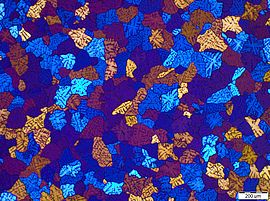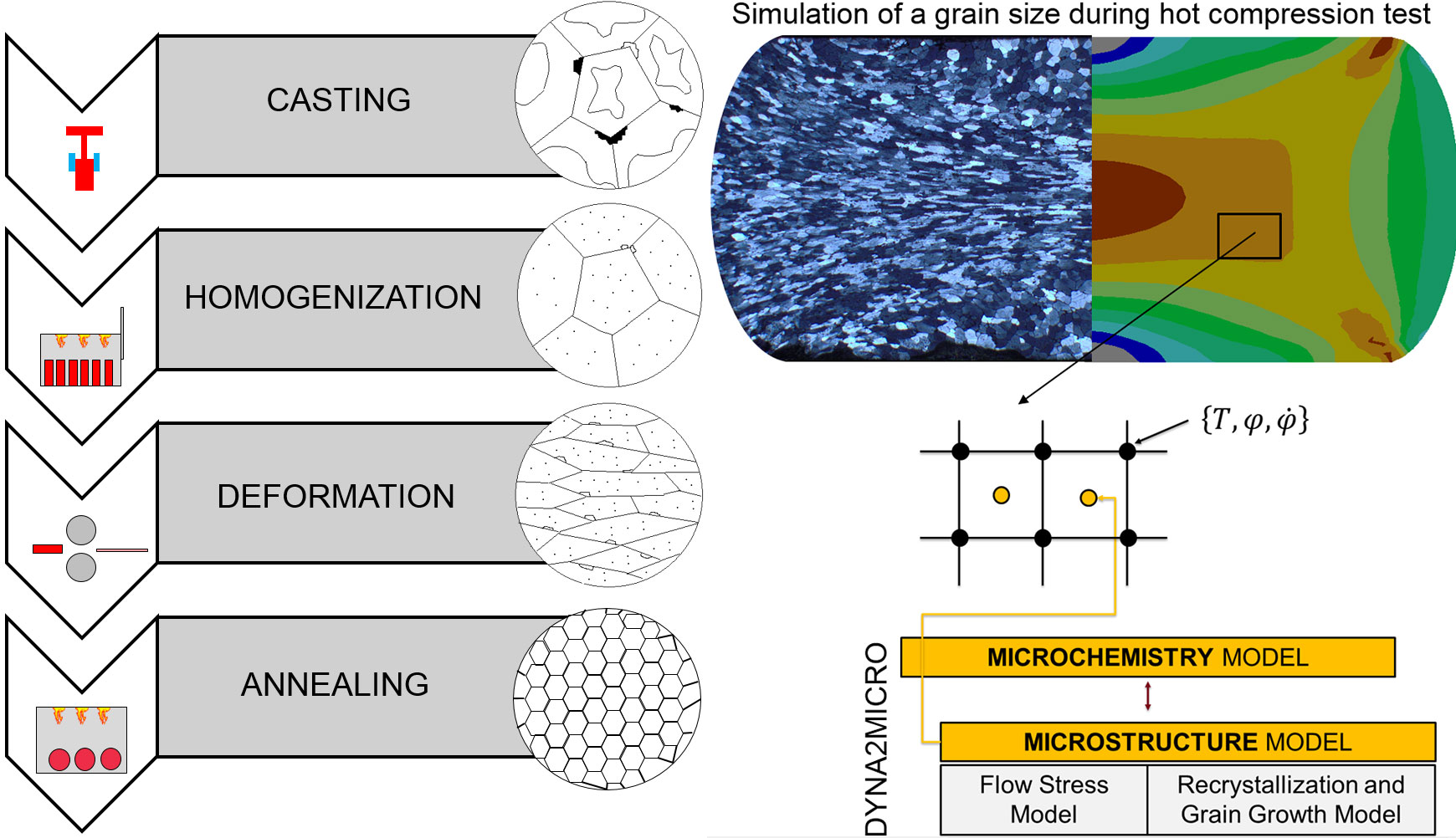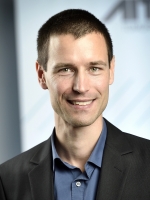The improvement of material properties and simultaneous reduction of the production time are of a great interest in manufacturing of lightweight metal products. The macroscopic material properties of the final products are directly related to the development of the materials microstructure during the production line. The plastic deformation as well as the heat treatment cause significant changes of the materials microstructure. Consequently, the most important mechanical material properties, e.g. the strength or formability are directly affected.
In order to design cost- and time-efficient production processes and thereby to be able to manufacture the products with specific material properties, a profound knowledge of the production process is essential. Since experimental investigations are costly, numerical simulations of production processes show a great potential for improving the knowledge of underlying mechanisms and an efficient design of production processes.
During the last years, the LKR Leichtmetallkompetenzzentrum Ranshofen GmbH has intensively worked on the prediction of the microstructure development in various manufacturing steps. In particular, processes such as solidification (casting, additive manufacturing), bulk forming (rolling, extrusion, forging) and heat treatment (homogenization, solution heat treatment, ageing) are considered. The scientists at LKR master the corresponding modeling techniques and for the validation of simulation results they refer to the long-standing expertise of LKR on the material characterization material characterization and semi-industrial processing.
Typical challenges of a material modeling in a semi-finished product manufacturing: inclusion of a process history (left figure) and calculation of simultaneous microstructural phenomena (right figure)
The team of experts in computational materials science solve daily the problems of (multi-scale) materials modeling for semi-finished product manufacturing in light metal industry and beyond. Among the typical challenges are the incorporation of the process history into the modelling of the microstructure evolution . The calculation of simultaneous microstructural phenomena as e.g. precipitation kinetics and grain size change allow a through process modelling from solidification to metal forming. The rapid development of new technologies, such e.g. additive manufacturing, promotes the development of corresponding material models based on experience gained from conventional processing technologies. To address the known uncertainties in material modelling as fitting of unknown model parameters and existing model gaps/assumptions, the algorithms of machines learning are used. The goal is to integrate the physics-based knowledge into a data-driven model and to develop hybrid models for describing the material behavior with respect to microstructural phenomena and process conditions.
Expertise
Numerical simulations using well-established commercial and open-source software as well in-house model development.
- Ab initio electronic structure calculations using quantum chemistry computer programs.
- Thermo-kineic modeling of multi-component\phase\particle precipitations using CALPHAD-based implementations.
- Simulation of a microstructure formation during solidification and its evolution during further thermo-mechanical processing using in-house developed material models.
- Simulation of macroscale materials behavior using Finite Element based solvers and integration of developed materials models.
- Application of machine learning algorithms to develop data-driven and hybrid material models.






![[Translate to English:] LKR Standort](/fileadmin/_processed_/2/8/csm_AIT_LKR_Standort_4fe61c1df0.jpg)